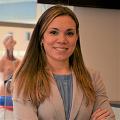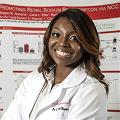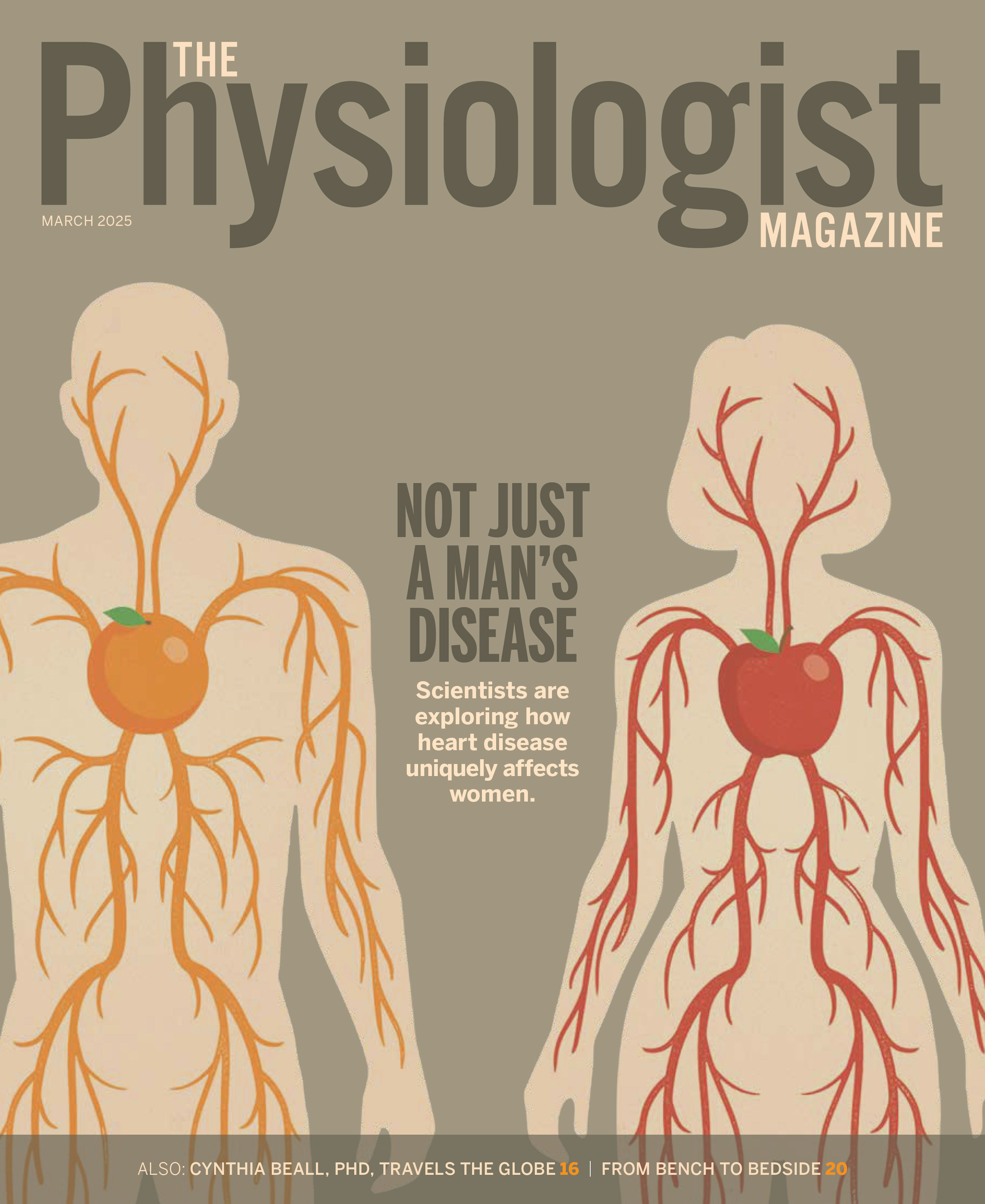Being Black in Science
Black physiologists share what it’s like to navigate a majority white academic culture.

In August 2020, a group of Black physiologists teamed up to organize a community dedicated to promoting Black scientists in physiology-related fields. Using the Twitter handle @BlackInPhysio and the hashtags #BlackinPhysiology and #BlackPhysiologistsMatter, these scientists facilitated a conversation and started a movement around diversity and inclusion and being Black in physiology-related fields.
During their newly launched Black in Physiology Week, held October 12–16, they organized a series of online events that showcased and highlighted Black physiologists. Notably, the week included a panel discussion focused on providing real strategies to increase recruitment, retention and promotion of Black physiologists and other scientists. The following is an excerpt of that discussion, which has been condensed and edited for clarity.
You can watch the full discussion at https://bit.ly/BiPWeekPanel. To learn more about Black in Physiology, visit www.BlackinPhysiology.com and look for Black in Physiology on Twitter, Facebook, Instagram and LinkedIn.
Clintoria Williams, PhD: “According to surveys conducted by the Association of Chairs of Departments of Physiology, the percentage of Black faculty averages 1% for the past 20 years. What do you see as an underlying reason why the number of Black faculty in academia does not reflect U.S. population? What can we do to fix this problem?”
Mildred A. Pointer, PhD: “I believe it has to do with the fact that the scientific community in general does not recognize the value that African Americans can bring to the scientific community. … Then what gets felt by African Americans is that we are not welcomed. … If that is the feeling and impression that one is getting, then the question becomes ‘why do I want to be a part of a community that does not see the value I’m bringing to the table? Let me go somewhere where people do value me.’
“[A few years ago] I was working with a majority institution, and one of the things that I got from that interaction is [the idea] that African Americans—because we are intuitive learners—have an inferior way of learning and that what [institutions want] is logical thinking because that’s what science is. We see that we are intuitive learners and that is not of value. … The scientific community doesn’t see any value that we’re bringing to the table. They see us as less than, so they don’t welcome us.”
Karla Haack, PhD: “The hurdles that come with navigating in an academic faculty position are numerous. Those hurdles exist for everyone irrespective of color … from the initial opportunity and access, to seeing what life would be like as an academic faculty member, to navigating all of the other things that need to be on one’s CV in order to be competitive for those tenure-track faculty positions. Because there’s only 1% of all those faculty that are persons of color to begin with, having someone that’s going to help you at every single phase doesn’t exist.
“Not having anyone help you and champion you and mention your name to get you that seat at that table … there are systemic roadblocks that are meant to create exclusivity across all populations.”
Karla Haak, PhD
“Not having anyone help you and champion you and mention your name to get you that seat at that table … there are systemic roadblocks that are meant to create exclusivity across all populations. Take that and magnify it significantly across our communities of color because we don’t have anyone to say, ‘Hey, come with me. Let me show you how this is done. Let me help you. Let me bring you into this network.’”
Robert Hoover, MD: “You’ve got institutional racism; there’s no doubt about that. It’s pervasive. It’s throughout systems. It is a weight that’s always there that is going to inhibit African Americans to move forward. … The other part—and these two things are interrelated—is pipeline. You’ve got to have the people coming up who are interested in science in general, and you got to get there early. ... By the time you get to undergrad, it’s really almost too late because they’ve already decided that science is too hard for them. … You’ve got to try to get down to that middle school, elementary school, high school level. And you’ve got to try to break down the institutional barriers that are in place once we get to the undergrad level that prevent us from going from that undergrad level to the grad level to the postdoc level to the faculty level. It’s really a multilayer problem, and you’ve got to attack it from all levels if you’re going to be successful.”
Jan Michael Williams, PhD: “One of the major problems with that transition to postdoc and to faculty member is it’s hard if you don’t have the right mentoring team. Minorities really don’t get that support. There are not a lot of [underrepresented minorities or URMs] that sit on these search and recruiting committees that will vouch for a certain person. We don’t even necessarily get into the conversation, and those are some of the things that need to be changed.”
Recruiting Black Students
Dexter Lee, PhD: “It’s a great transition to our second question … recruiting Black students to physiology and physiology-related disciplines is the key to increasing Black faculty in academia. In other words, it’s hard to convince someone to be what they can’t see. Representation does matter. How do we recruit Black students when the number of successful Black faculty examples are so few?
Haack: “Frankly, a challenge is encouraging majority scientists that this is important because we [as Black scientists] are already overburdened with this work. We are already sitting on all of those committees doing all the outreach, doing all the [diversity and inclusion] stuff. … We work really hard, but we are not enough. We need white scientists to say this is important, and we need them, and us, to show the younger generation that it is possible. We can’t be what we can’t see. We know that’s true, but we also need other people to help us because if that burden is solely placed on our shoulders, we know that hinders our success. We have to have everybody working together to bring more younger people into the fold.”
Hoover: “Most of the time these efforts are local efforts that have to spread out and start at the institution level. You need to, first of all, get the leadership on board. That is critically important because if the leadership is not on board, you’re dead in the water. You have no shot of actually establishing any kind of a program that’s going to successfully recruit minorities because … if the chair or the dean or whoever is guiding the effort is not making it clear that this is very important, then the majority scientists are not going to actually participate and are not going to actually take it as something of value. So, the first thing you have to do is convince your leadership.”
Recruiting Black Faculty
C. Williams: “A lot of us consider that navigating academia is a game, and most Black faculty and students indicate that they’re not taught how to play this game. What innovative strategies would you use to increase the number of Black faculty in physiology and physiology-related departments?”
Hoover: “My experience has been that there are large institutional differences in the way that places approach this. That winds up being the difference between the places that do wind up being diverse and the places that don’t. I come back to being intentional, making a program, establishing diversity as a core belief, getting the senior faculty and the chair on board that diversity is going to be a priority. … From there, you’ve got to be honest with the people that you’re recruiting as you’re starting from a relatively low number. You tell them that this is going to be a new day … and you make sure that they get to meet with the people of color that are on campus so they can give their perspective. You lay out to them how you’re going to be different, how you’re going to go from where you are at the low point you’re at to this higher, better point of diversity. What I find is that once you get the critical numbers the program tends to take care of itself. It tends to be self-sustaining as those people recruit the next generation.”
J. Williams: “You have to have a diverse search committee. And these committees need to start actively and aggressively recruiting minority candidates. Put different things in place—maybe sending teams out and talking with these individuals to seriously be aggressive at recruiting. Call these candidates on a regular basis because, at least for me when I was applying for different faculty positions, I didn’t necessarily think that I was the one that they were choosing. … One example: I went on a faculty recruitment, and I didn’t even get picked up from the airport. It’s one of those things. If you say you want a diverse department, then actively recruit. I think you need to be aggressive with that.”
“You have to have a diverse search committee. And these committees need to start actively and aggressively recruiting minority candidates.”
Jan Michael Williams, PhD
Finding Mentors and Sponsors
C. Williams: “Relationships are key. How do you build them and identify the individuals you should develop these relationships with?”
Haack: “We need good mentors, but I also want to stress the importance of having good sponsors. Nothing will get us further in our career than having somebody who brings up your name when you’re not in the room. ... They don’t
have to be your friends. They may not even necessarily be in the same section of science as you are, but somebody that’s always going to advocate for you whether or not you’re in that room speaks volumes.”
Hoover: “Even at this stage of my career, I’ve got a mentorship committee, essentially a group of people that, for different things, I can go to for advice: ‘How do I navigate this?’ You have to, over the years, cultivate these relationships.
The one thing I tell every minority student ... is don’t be afraid. Most people are going to actually try to help you if you ask for help.
“It’s important to have multiple mentors that can guide you in different ways and give you different sets of advice. … And if your mentor is not also a sponsor, then he’s not a very good mentor. … I can’t tell you how many times I’ve been on committees that started looking to fill spots on the committee and no one has mentioned diversity. No one has mentioned candidates of color at all. Invariably, I’m always the person who says, ‘Well, we’ve got to think about diversity here.’ … People usually say, ‘Oh, yeah, yeah, right, you’re right.’ … So, make those connections. Don’t be afraid. Approach people. People will help you.”
Pointer: “This is what I’ve learned: Select people who share common values with you. Listen to your gut. Intuition is invaluable. … Currently, for example, I belong to what I call a breakfast club. We meet every two weeks. One of the people is Jewish. Another person is Brazilian, and I’m African American, but you would think we were related. Why? Because we share common values. … We got to talking, and we just felt it. You select individuals based on your gut feeling and your common values, so you’ve got to know you. Who are you? What’s important to you? What are your key values? Is honesty big for you? Is fair play key for you? Know who you are, and then follow your gut, and that usually will lead you to who you need to form a relationship with.”
“What’s important to you? What are your key values? Is honesty big for you? Is fair play key for you? Know who you are, and then follow your gut, and that usually will lead you to who you need to form a relationship with.”
Mildred A. Pointer, PhD
Advising Your Younger Self
Lee: “What one piece of professional advice would you give to your younger self?”
J. Williams: “Negotiate, negotiate and negotiate, and make sure you have everything on paper.”
Pointer: “At all times, I am enough. Accept positions that are beyond your capability. … Don’t wait to have all of the qualifications for something before you say, ‘Oh, yeah, I can do that.’ Step out and say, ‘I am enough. I can do this, and I will learn what I need to learn.’”
Hoover: “You have to know what the important things are to do. Say yes to the important things, but you’ve got to learn how to say no to those things that are not necessarily important and are not necessarily going to advance you because they will just eat your time up, and your time is really, really valuable. One of the things about being a minority in these areas is they always want you for something because they need a minority on this committee. … [Ask] ‘are you going to protect my time if I lead the diversity effort, or am I doing it for free?’ … [Related to networking], I preach this all the time that you’ve got to get out there. You’ve got to go meet people. You’ve got to shake hands. You’ve got to go to that reception. You’ve got to go to that dinner. You’ve got to meet people because this is part of institutional racism, which is that if they don’t know you, you’re not going to get that leg up.”
This article was originally published in the January 2021 issue of The Physiologist Magazine.
The Physiologist Magazine
Read the Latest Issue
Don’t miss out on the latest topics in science and research.
Contact Us
For questions, comments or to share your story ideas, email us or call 301.634.7314.
Panelists
 Karla Haack, PhD, lecturer, Kennesaw State University, Kennesaw, Georgia
Karla Haack, PhD, lecturer, Kennesaw State University, Kennesaw, Georgia
 Robert S. Hoover, MD, associate professor, Emory University, Atlanta
Robert S. Hoover, MD, associate professor, Emory University, Atlanta
 Mildred A. Pointer, PhD, chair and professor, Howard University, Washington, D.C.
Mildred A. Pointer, PhD, chair and professor, Howard University, Washington, D.C.
 Jan Michael Williams, PhD, professor, University of Mississippi Medical Center, Jackson
Jan Michael Williams, PhD, professor, University of Mississippi Medical Center, Jackson
Moderators
 Clintoria R. Williams, PhD, assistant professor, Wright State University, Dayton, Ohio
Clintoria R. Williams, PhD, assistant professor, Wright State University, Dayton, Ohio
 Dexter L. Lee, PhD, associate professor, Howard University, Washington, D.C.
Dexter L. Lee, PhD, associate professor, Howard University, Washington, D.C.
Behind-the-scenes Coordinator
 Keisa Mathis, PhD, principal investigator, University of North Texas Health Science Center, Fort Worth, Texas
Keisa Mathis, PhD, principal investigator, University of North Texas Health Science Center, Fort Worth, Texas


